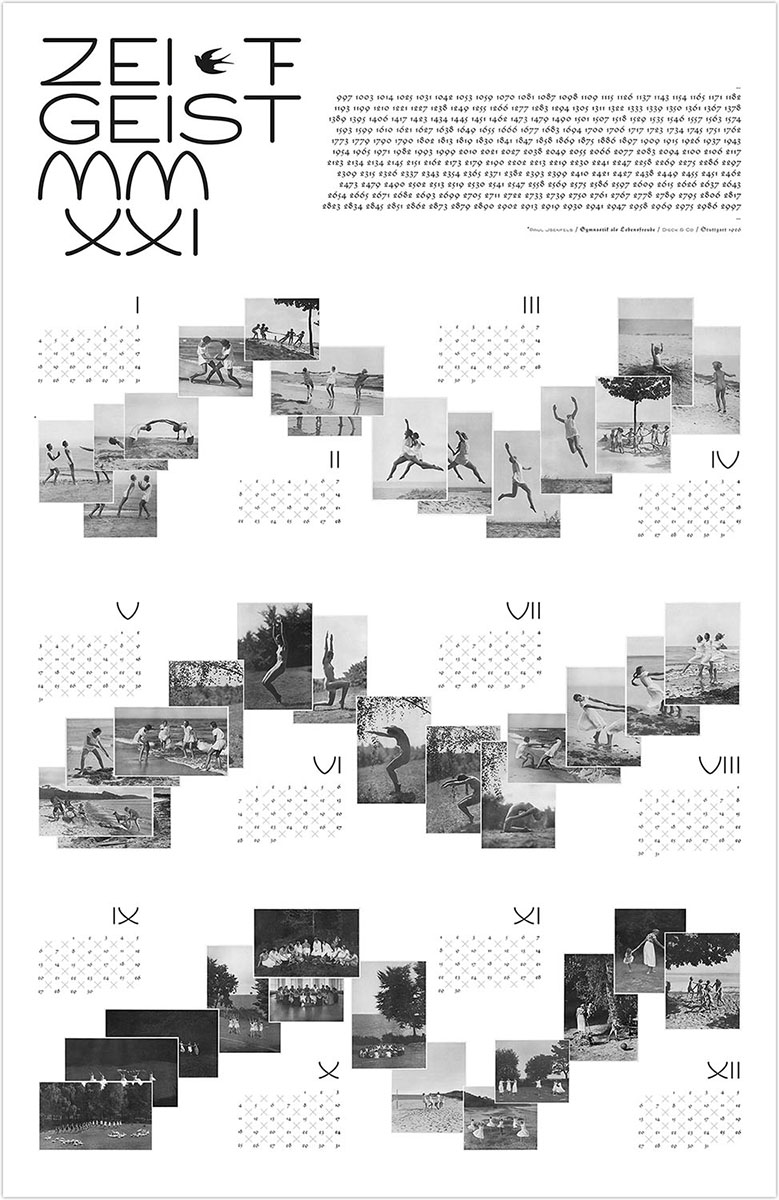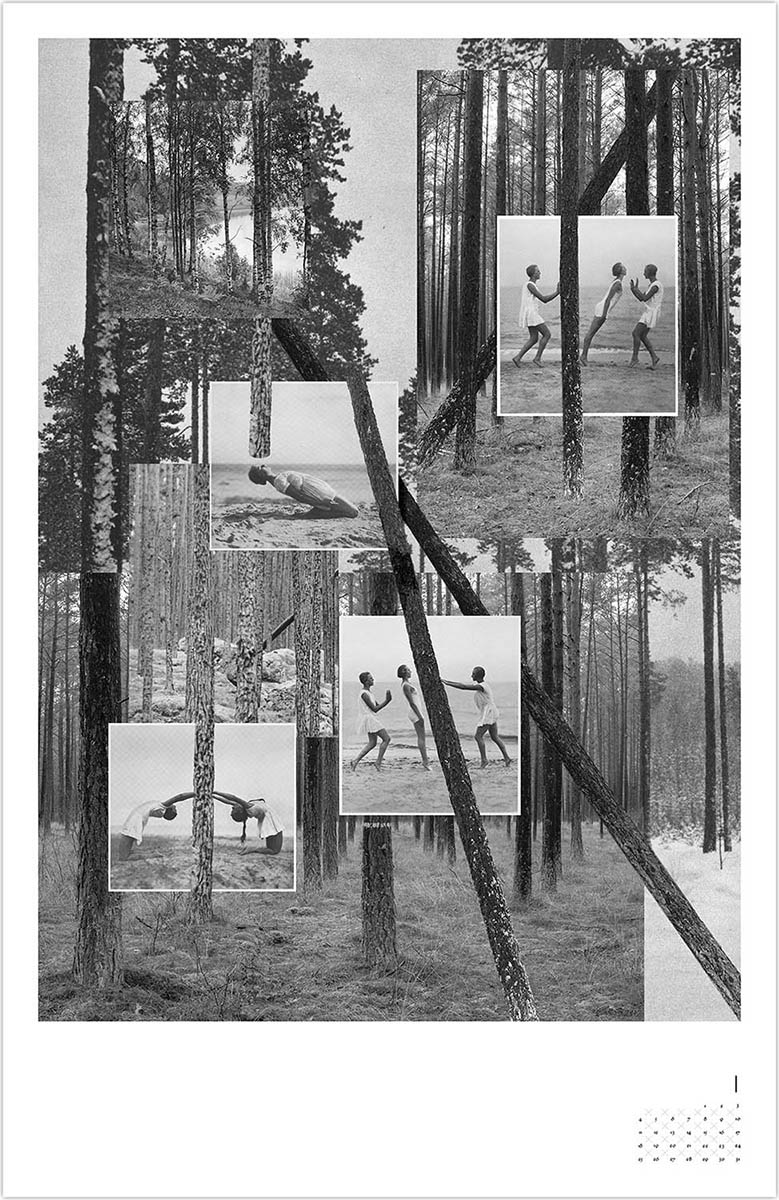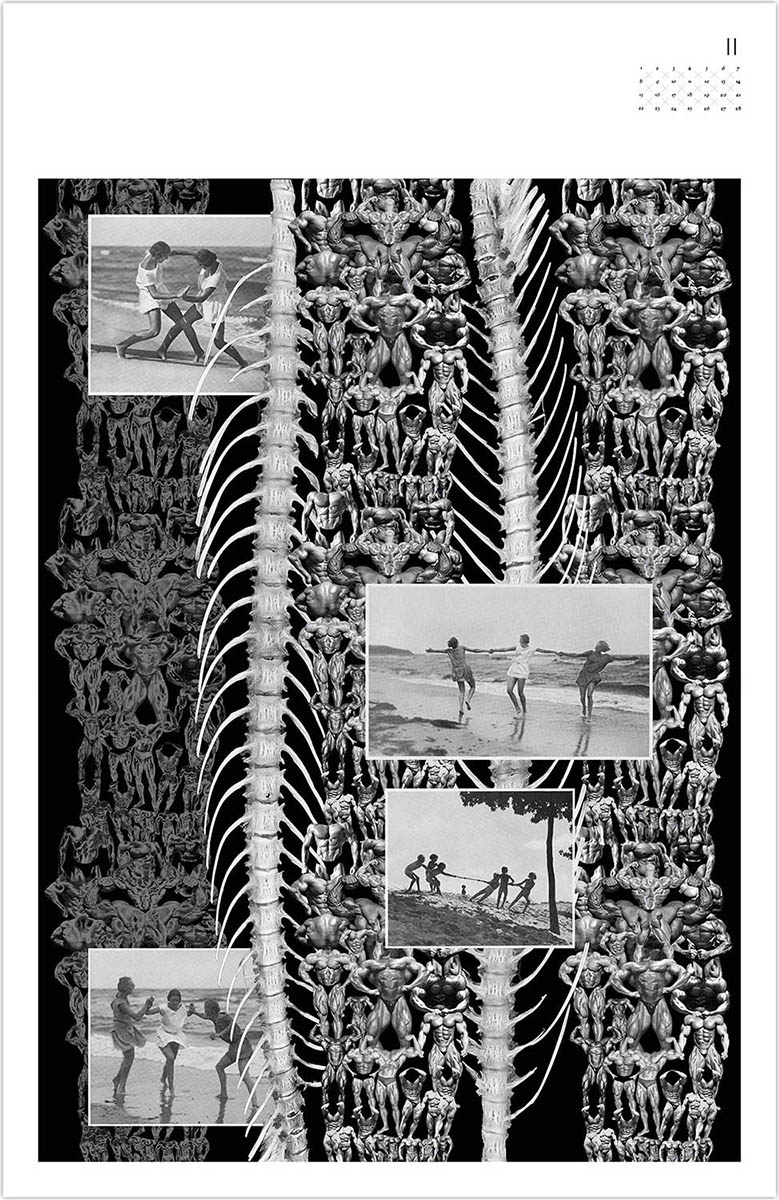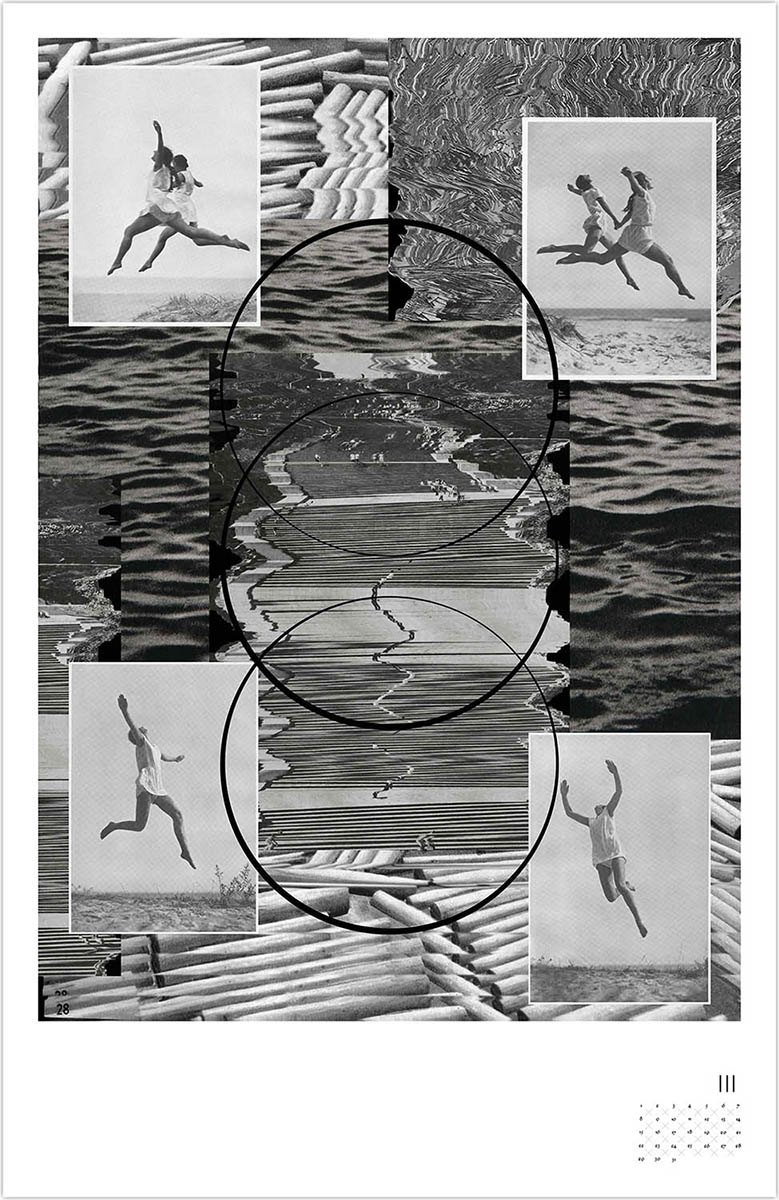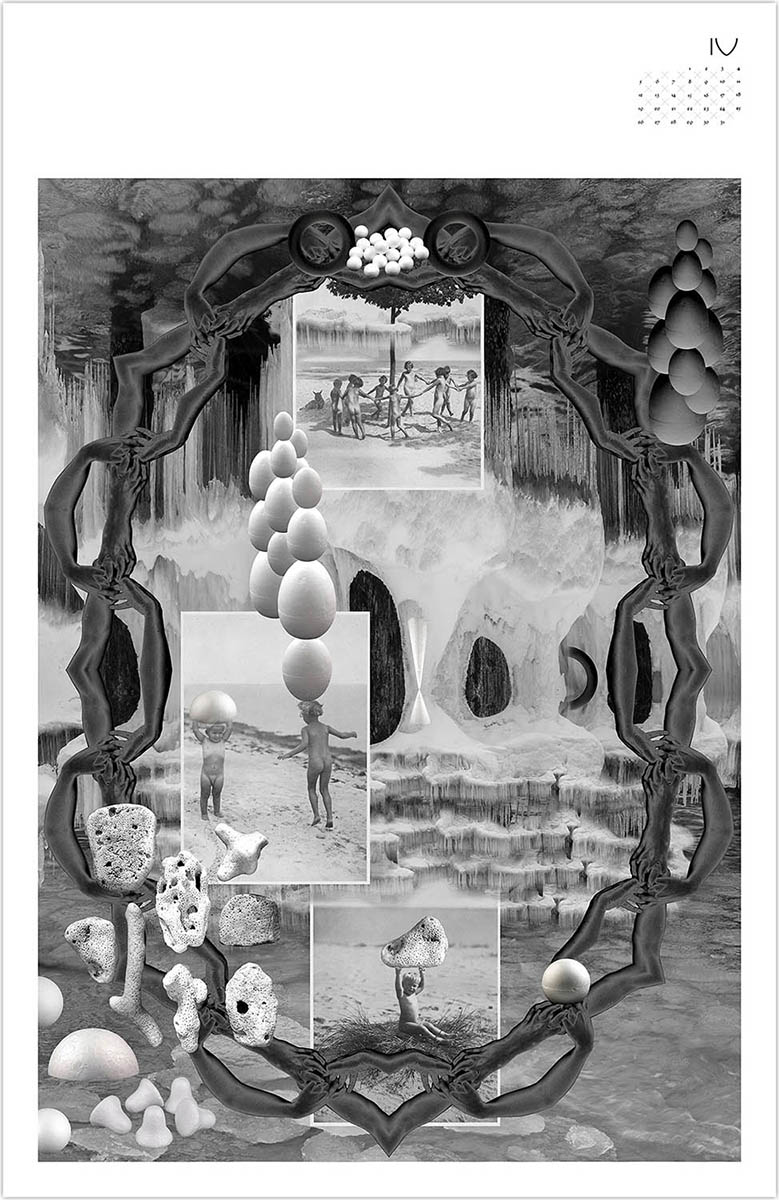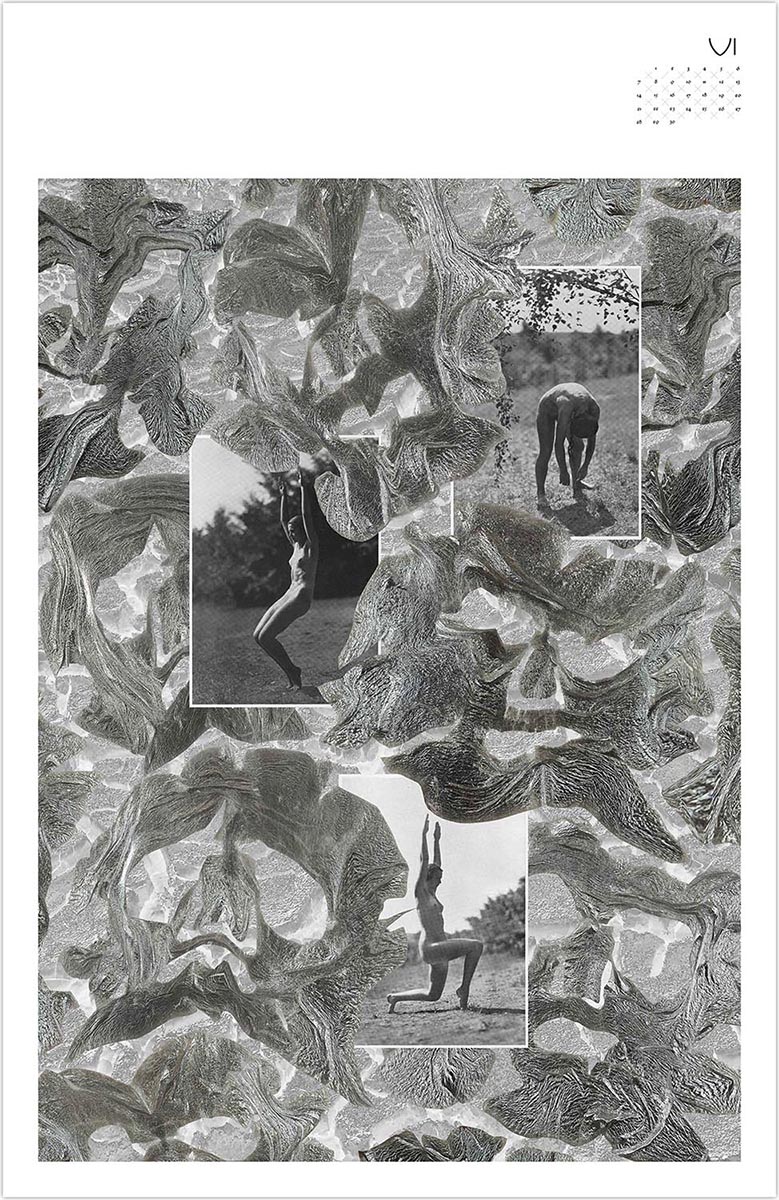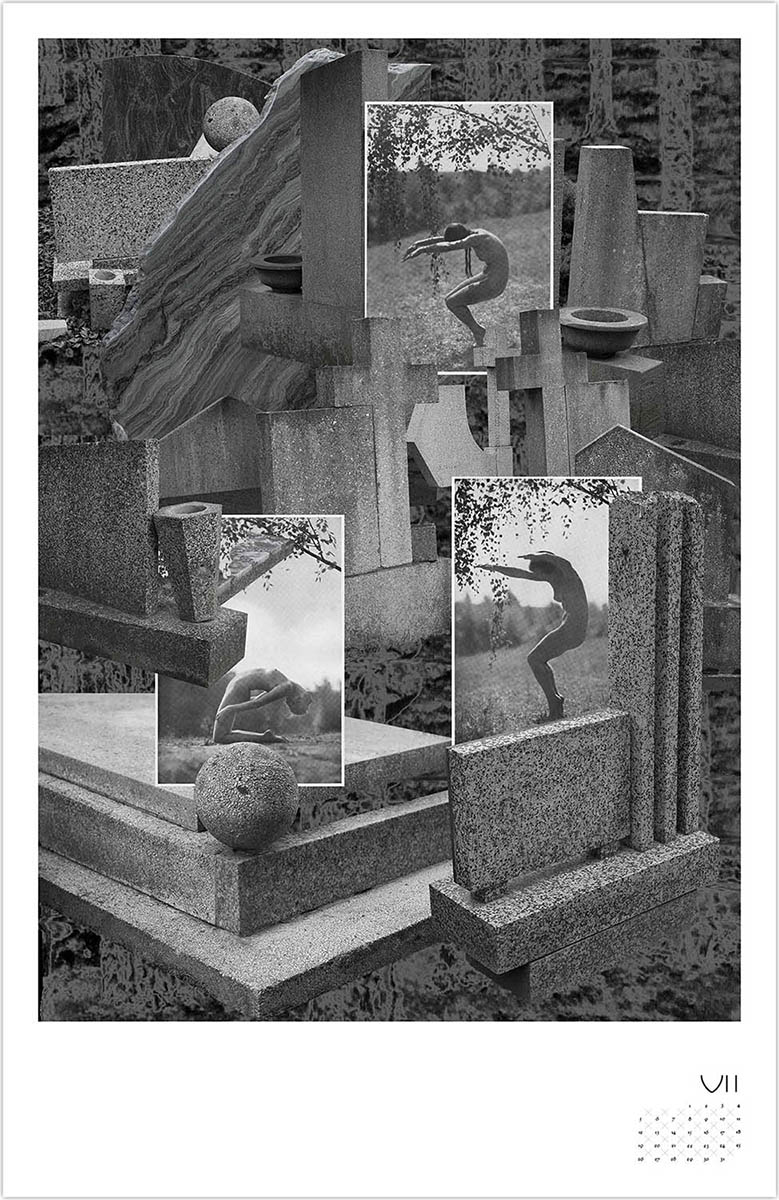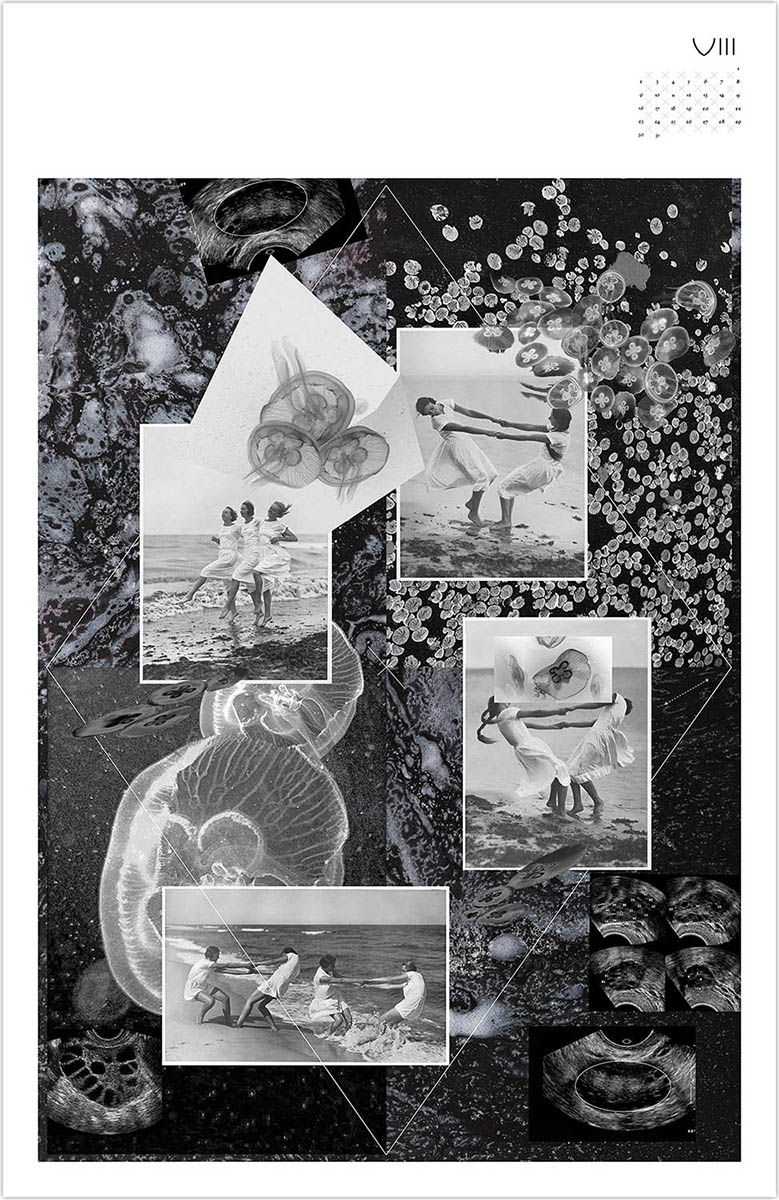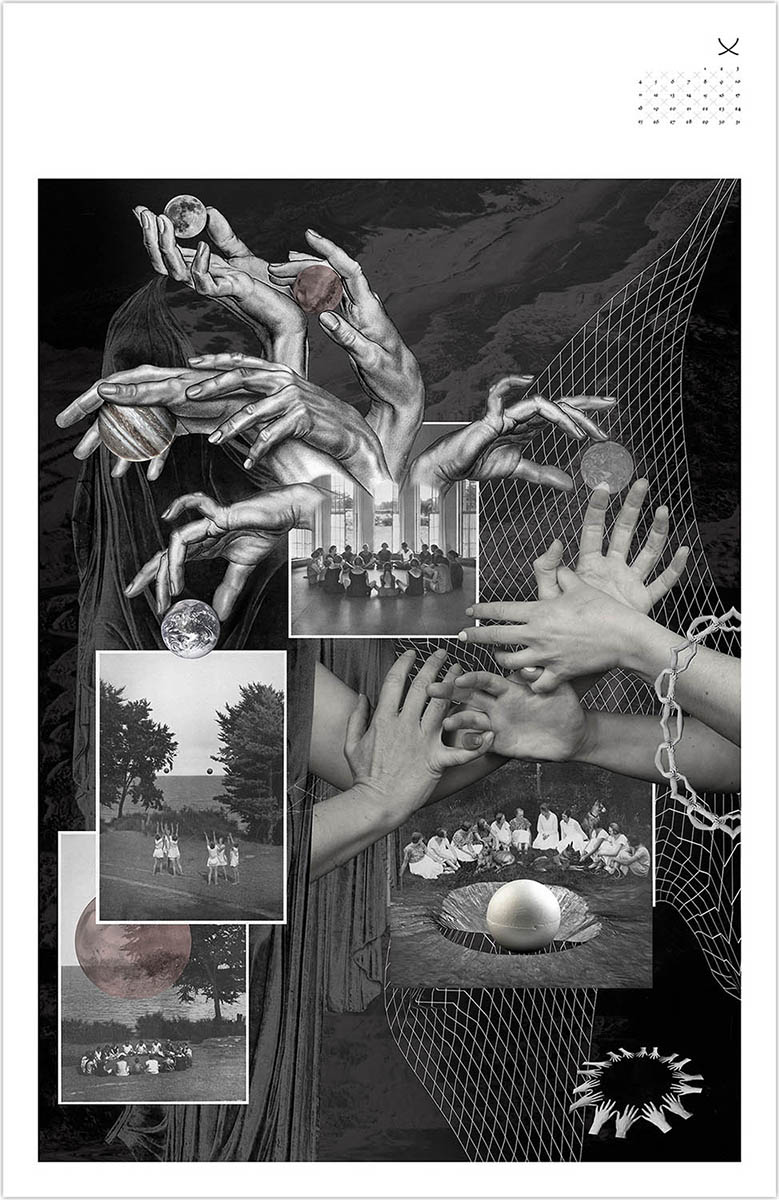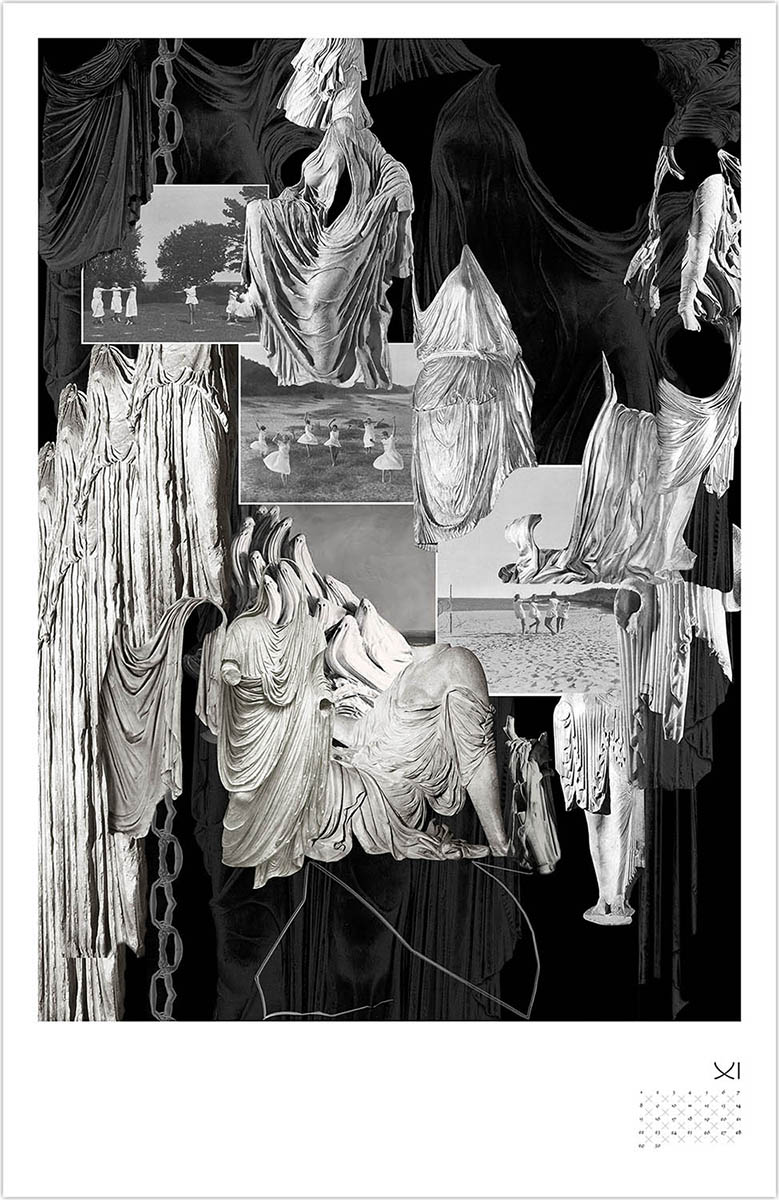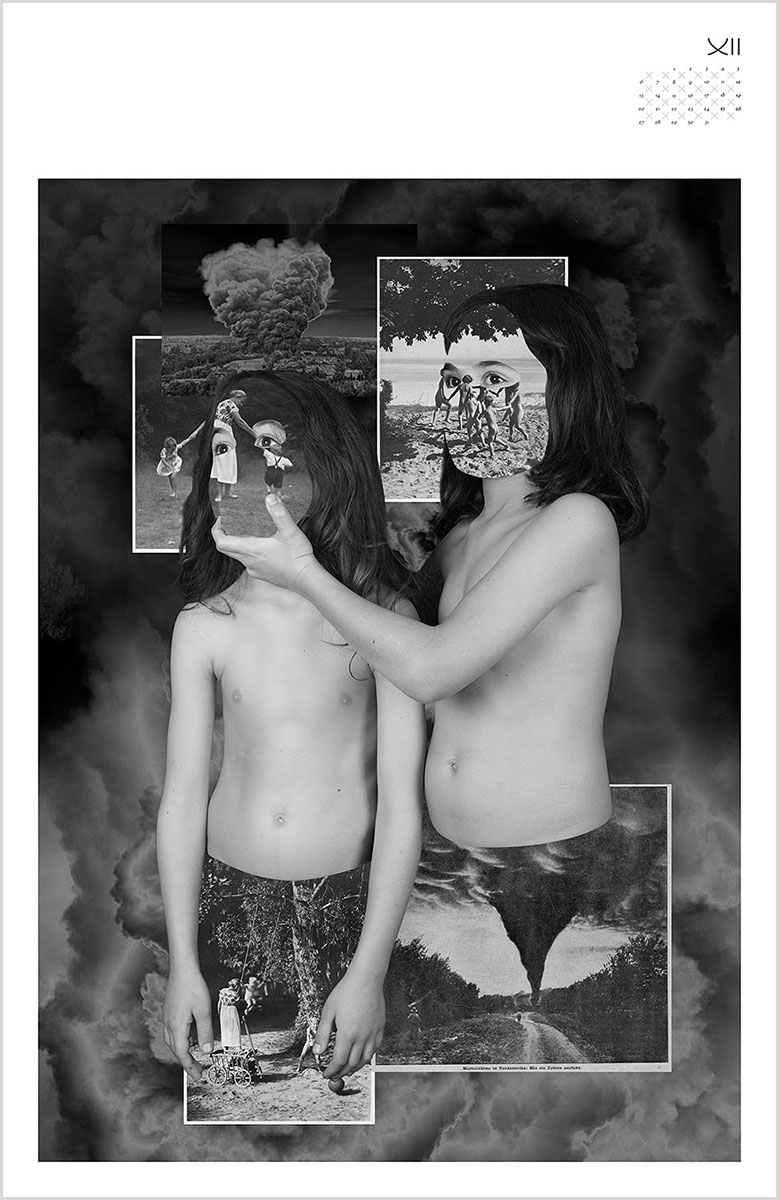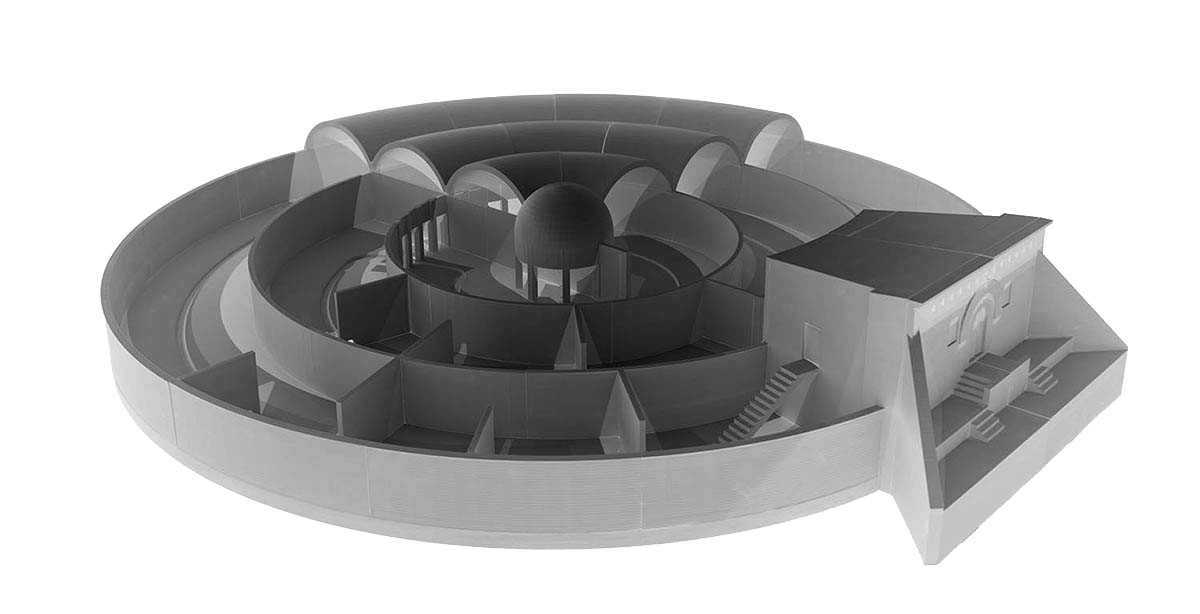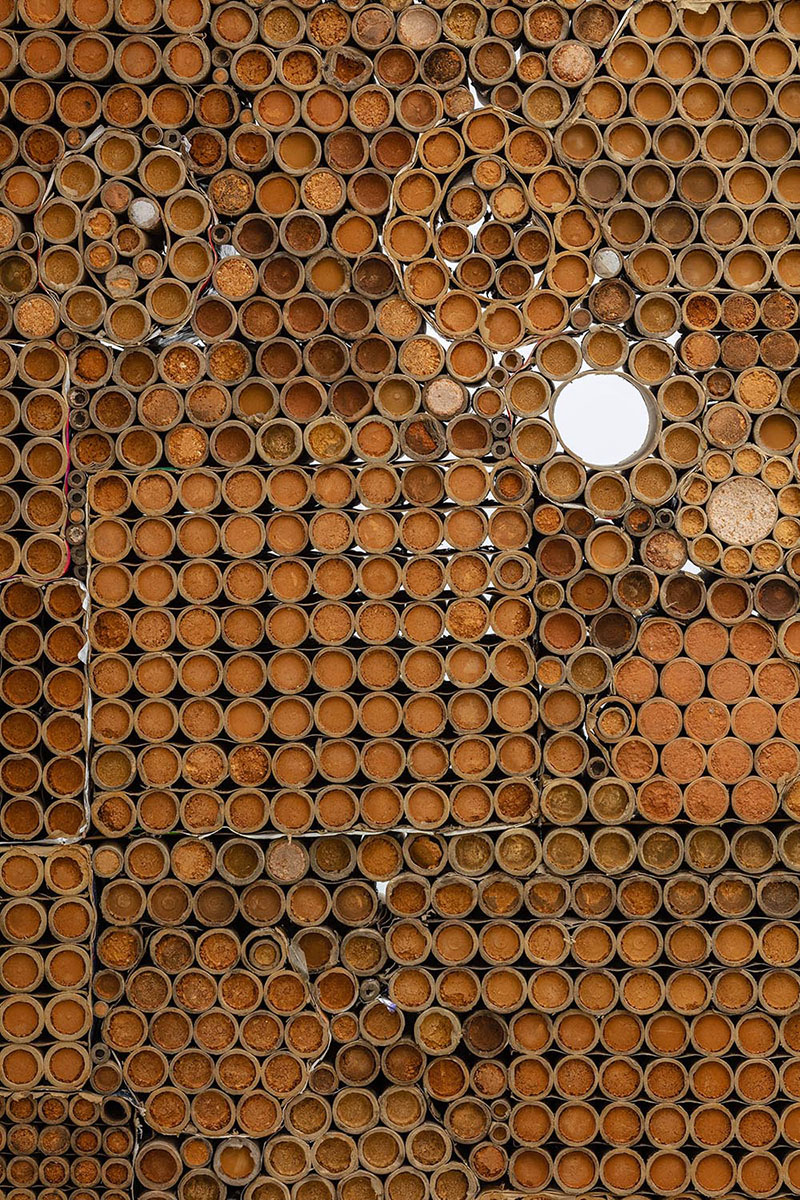“ZEITGEIST MMXXI Calendar for the New Old Times”
series of thirteen collages | print on the paper Hahnemühle Photo Rag | edition 3 + 1 AP | format 55 × 85 cm
2020ZEITGEIST MMXXI Calendar for the New Old Times is a work consisting of thirteen collages made by Patrycja Orzechowska based on selected photographs from the book Gymnastik als Lebensfreude [Gymnastics as the Joy of Life] by Paul Isenfels, published in 1926. The photographs show young women and children—students of the Sopot Gymnastics School [Gymnasticschule]. The figures are naked or dressed in loose, flowing robes, joyfully raising their hands to the sun, exposing their bodies to light, air and water. Their figures are often captured in a moment of synchronicity, creating a geometry consistent with the surrounding nature. Their poses are intertwined with images of nature—with views of forest, beach, sea and sky. There is also the recurring motif of the circle, the symbolic closure of composition and time.
The series of collages take the form of a calendar, in which each month has a different characteristic motif. The year 2021 is an element of an endless rhythm, which marks its presence in the past and future. The arrangement of days and weeks from this year is also the arrangement that was in force in 2010, 1982, 1843 or 1926, among others, and will be in force in 2027, 2049, 2083 and beyond.
The title Zeitgeist is a philosophical phrase coined in the 18th century that means “spirit of the age.” It refers to the intellectual and cultural climate of a given time. At the exhibition we are symbolically transported to the beginning of the 20th century, when the cult of the body and active contact with nature fascinated thinkers and politicians. At that time in Germany, the concept of ecology was born; interestingly enough, today it is more associated with left-wing views, then it was eagerly used by right-wing politicians. Nature mysticism, vegetarianism, naturalism, traditions connected with the land of the “ancestors”—are ideas that were very much alive at the time and practiced with varying results. The progressive gymnastic school of Sopot—educating women, children and working people—located within the boundaries of the Free City of Danzig, also operated in that spirit. Its assumptions were in line with the popular view that practicing physical culture is not only a source of joy in life, but also important for the intellectual and spiritual development.
The works can also be connected to one of the reform movements of that era, which arose somewhat earlier around the community living on the Monte Verità mountain in Switzerland. It was a place that brought together visionaries of the time—artists, writers, philosophers, dancers, musicians. The residents were looking for an alternative model of life to that of the growing consumerism. They created a utopian community that was guided by the slogans of a return to nature, that encompasses a vegetarian diet and nudism. Equally important was physical activity, which, as in the Sopot school, was to be the basis for a healthy body and spirit.
By working with the archival material, Orzechowska can put herself in the position of a history narrator, reverse the intentions of the images by employing the strategies of quoting, appropriating and capturing. Archival photographs depicting young women and children immersed in a ritual dance in honour of the earth and the sea become choreographies in the spirit of ecofeminist commitment in the artist’s multi-layered narrative. However, the artist remains aware of the historical entanglements of reform movements and the distortion of their legitimate ideas.
The work was realized within the framework of the Cultural Scholarship of the City of Gdańsk 2020.
—
Wera Morawiec, Eluding outlooks. A few reflections on Patrycja Orzechowska’s „ZEITGEIST MMXXI Calendar for the New Old Times”, blok magazine, kwiecień 2022


